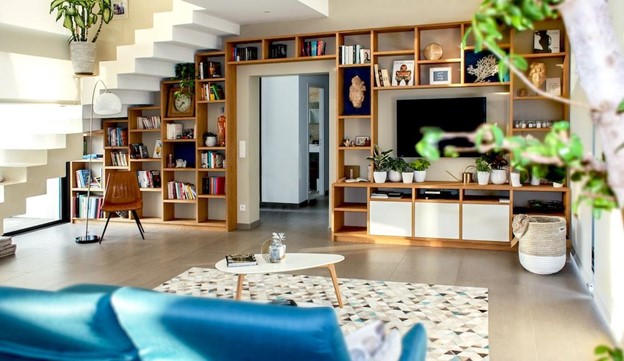Home Furnishings: Why So Much Waste?
Fast fashion has been making headlines for several years now. But have you heard of fast homeware? Many consumers now approach fashion and homeware in a similar way – fast!
Why is this a problem? Well, research by furniture specialists, Hammonds recently revealed that an average of 69.9 million homeware items get thrown away each year. In total, their estimated value is £2.17 billion.
With items that are still in good condition finding their way to the bin, sustainability goes by the wayside.

Trends that come and go
It can be fun to follow trends and deck your home up in a way that follows suit. Unfortunately, it is this habit that drives fast homeware.
The survey of 2,000 people found that a quarter of homeware consumers say that trend-following is important to them. This motivates them to impulse-buy trendy pieces online.
These trends rise and fall in quick succession. For example, searches for “cottagecore” objects have already declined 45% since they were all the rage last year.
New trends have popped up to replace them, like Danish pastel, which has had a 1,015% increase since last year. But how long will it last?
There’s nothing wrong with having a bit of fun with your interiors. The problem arises when items are thrown out and replaced too soon, inevitably harming the environment.
Why so much waste?
It wouldn’t be fair to pin all the blame on consumers. Cheaply made interiors are marketed towards millennials and Gen Z. This is because they typically rent more and have less disposable income than older generations.
The survey found that younger people are more likely to purchase smaller homeware items at a more frequent rate each year.
A hefty 78% of 18-24-year-olds said that they buy cushions at least once a year, something that only 28% of those over 65 reported doing.
77% of this younger age group also said they purchase small ornaments and ceramics once per year.
Meanwhile, 74% of them said they buy artwork and photos at a similar rate.
And what are the rates of wastage? Well, 9% of all survey respondents said they throw homeware items they want away. This means that an average of 1.49 cushion covers and 1.07 pieces of artwork find their way to the landfill each year. That’s an average total of 8,995,562 cushion covers and 6,459,900 artwork pieces in the UK!
Would higher value mean less waste?
The perceived cost of more sustainable homeware prevents homeware consumers from shopping sustainably. 45% said this is an issue for them.
Finding sustainable homeware pieces is possible; it just means you may have to do a bit more digging. Consider buying bargains on second-hand sites like eBay and Gumtree (and consider using these sites to rehome pieces you no longer want).
Alternatively, consider buying more expensive pieces if you can, but shopping less frequently. Getting something you truly like can be a long-term investment, pulling you away from a vicious cycle of waste.
Quality items for your home
Across young and old age groups, checking a brand’s sustainability before buying is something that only a minority of people are doing. For perspective, 13% of people in the 18-24 age group say they do this, while 25% of 55–64-year-olds say they do.
However, 66% said they do care about finding high-quality, durable items.
Perhaps it would be easier to put sustainability first if we knew exactly what materials to look for. Have a little look into the topic to get a sense of this. For example, could you aim to give preference to homeware with natural materials like bamboo, wool, cork and hemp?
Shopping sustainably is easier when you know where to look. And instead of throwing it out, you can always donate to charity or sell it online.


















